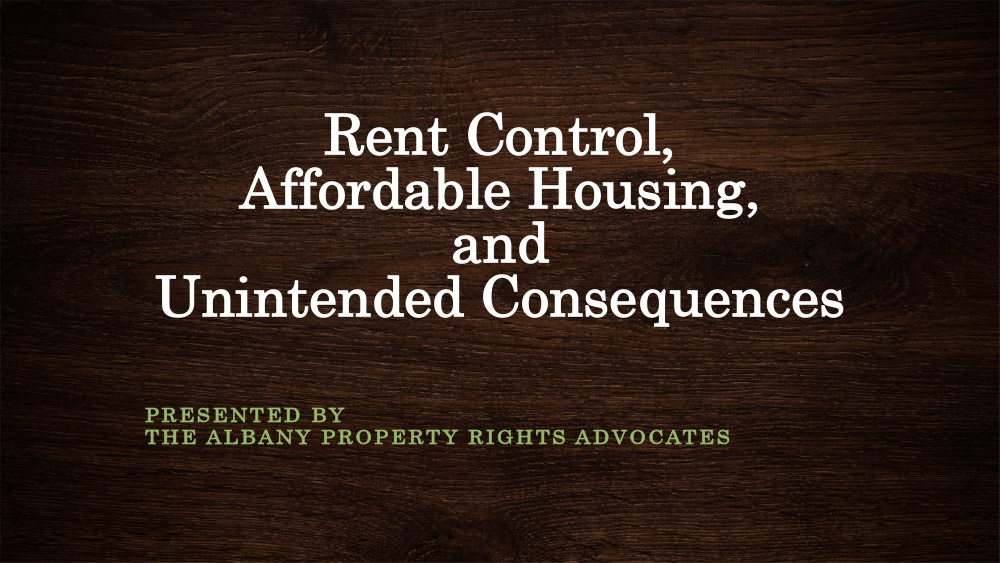Perils of Rent Control
Stay connected! Submit your email address to sign up with APRA today!
- Rent control has a negative impact on property values.
- Although well-intentioned, rent control does not only help people who have trouble paying rent. People fortunate enough to live in the same apartment for several years who are fully able to pay a higher rent are highly unlikely to ever move out – given how low their rent is compared to market rate. When people don’t move very often, this results in a decrease in the number of units available to rent in the community.
- Developers are far less likely to build affordable housing in a community that has rent control policies in place. This leads to an overall decrease in available housing because no new housing is being built.
- Under rent control, landlords have little to no incentive to maintain or keep-up their properties. Considering that a landlord is only able to increase rent to market rate when a renter vacates a unit, it’s in the landlord’s best interest to do the bear minimum in terms of upkeep and maintenance, in the hope that the tenant will choose to vacate.
- A far better solution, rather than rent control, would be to provide some type of community-sponsored economic assistance/subsidy program for the people who truly need assistance paying the rent.
Why Rent Control Hurts Renters
View this video that describes how what seems like a good idea can ultimately hurt renters and property owners alike.
Price Ceiling — Rent Control Example from John Stossel
